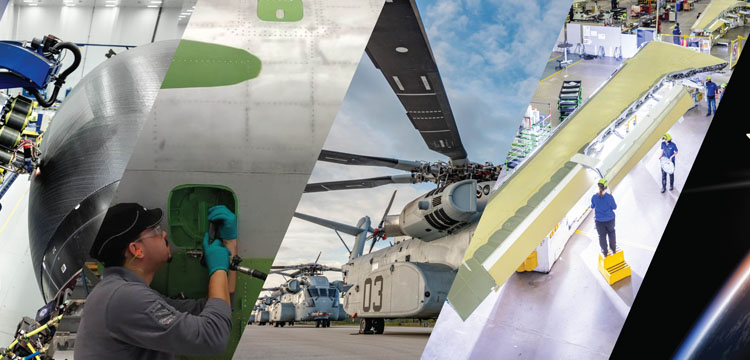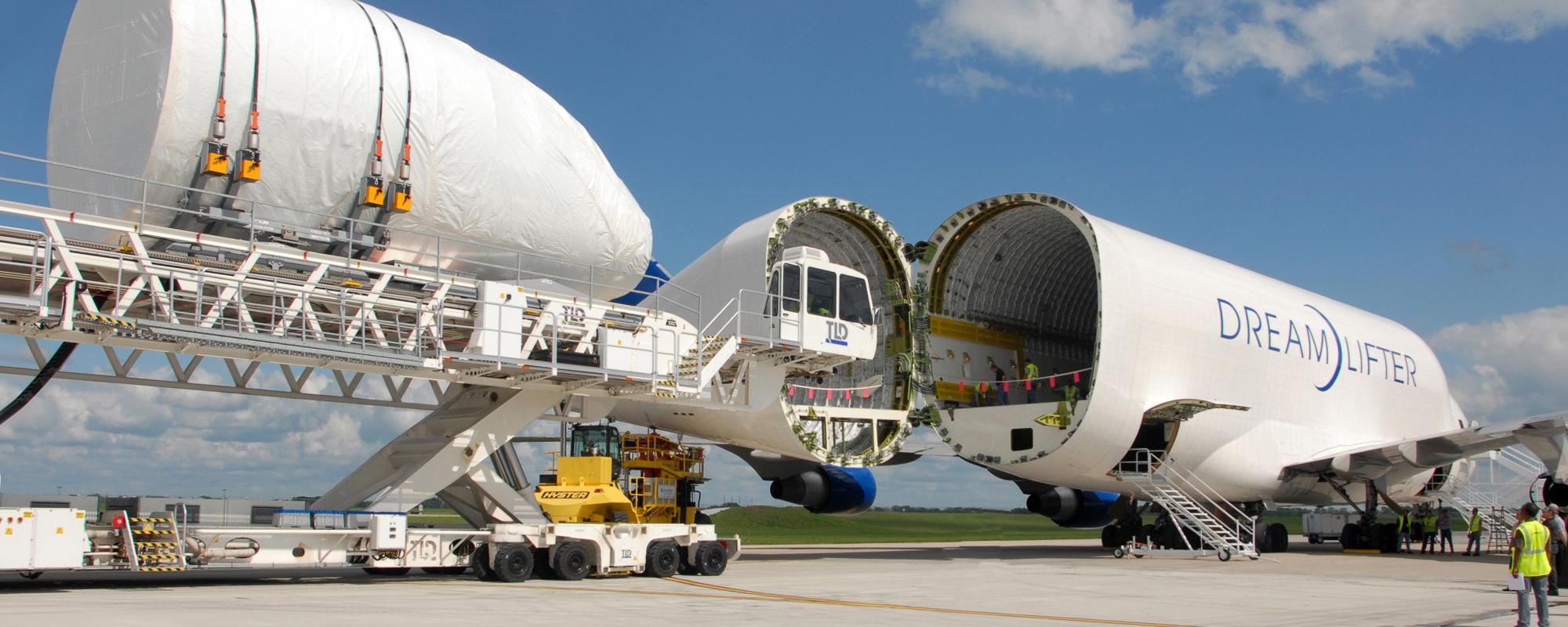Lohmeier and other Spirit leaders believe these achievements offer lessons key to America’s current challenge of industrializing hypersonic weapons. “The U.S. is looking to industrialize this very critical capability quickly. Given our history and accomplishments, who better than Spirit AeroSystems to help with that mission?” Lohmeier says.


Spirit AeroSystems’ Legacy of Industrialization
For those looking for an industrial base to manufacture the next wave of defense weapons — including hypersonics — look to the American heartland for a model of manufacturability.
In 2005, the year Boeing sold its historic Wichita, Kan., plant and Spirit AeroSystems was created, the new company produced 21 Boeing 737 fuselages per month. Today, Spirit’s Wichita plant produces 52 Boeing 737 shipsets each month, or about 2.7 per day. In the last 15 years, Spirit has also significantly diversified and expanded, with locations across the globe, a large and effective supply chain, a growing and highly skilled workforce, independent research and development, new centers of fabrication, and a diversified statement of work in both the commercial and defense landscapes.
Michelle Lohmeier, a veteran of defense aerospace manufacturing and Strategic Advisor to the CEO, Business Development for Defense and Fabrication Growth at Spirit AeroSystems, believes this snapshot of the company’s aircraft production expansion demonstrates a unique set of achievements and leadership position in aerospace manufacturing. “Spirit, more than any other company I’m familiar with, demonstrates the consistent ability to qualify and optimize material and manufacturing systems,” Lohmeier says.

Moving from Materials to Manufacturing
Kimberly Caldwell, Spirit AeroSystems’ Lead for Collaborative Research and Development, believes the company’s diversification and record of deliveries across multiple OEMs, materials, and platforms speak to the ability to industrialize the next wave of materials and structures.
“As you look at all of the new material systems that have come to market over the years, Spirit has been key in truly understanding those systems,” says Caldwell. “Significant help is needed now to industrialize new material systems and engineer manufacturing processes that go with them in order to produce at rate and scale. Whether working in early-stage design with OEMs or directly with material developers, Spirit has that experience.”
Lohmeier and Caldwell cite the progression of materials development and manufacturing from the 1990s to today, from all-sheet-metal assemblies through two generations of composites and now, thermoplastics and CMCs development.
Charts, graphs, and timelines of material advancements and manufacturing successes are one thing, says Lohmeier, but few things are more impressive than a tour of Spirit’s composite-fuselage production line. “Walk our production lines, see the scale of what we do, the way we begin with carbon fiber tape and complete an all-composite, fully equipped, assembled and tested fuselage section — at high volumes. Nothing is more compelling,” Lohmeier says.
Activating an Existing Industrial Base
The sense of urgency regarding hypersonics industrialization is often accompanied by defense industry concerns about a limited industrial manufacturing base. But, according to Spirit leaders, such concerns can be overcome by looking to the commercial market. “Yes, if you are only considering the traditional defense network, there are limits to manufacturing bandwidth,” says Lohmeier. “That is where utilizing Spirit AeroSystems and the broader commercial network of suppliers can be helpful.”
“We’re an existing industrial base,” Caldwell adds. “Spirit offers a domestic supply chain extending down five to six levels. We know how to manage suppliers for affordability and the vital considerations for defense, including clearances, cybersecurity and compliance issues.”
Leveraging Spirit’s broad and deep supply chain is one part of a winning solution for industrializing hypersonics. Lohmeier and Caldwell also point out that Spirit AeroSystems’ ability to adapt new materials and manufacturing processes benefits the entire industry.
A quick look back at our history of industrialization demonstrates that our advancements are shared and readily adopted by the rest of the industry as well. We want to help enable that process in order to meet the call for potential large-scale production needs.
”From aggressive research and technology activities to a growing defense portfolio, Spirit AeroSystems is positioning itself to play an even bigger role in meeting critical U.S. aerospace needs. “Industrialization is our true legacy — we’ve been doing this for years and years. We know the process. We have the people. We’re ready to answer the call,” says Lohmeier. “Spirit is the perfect answer to the government’s search for rapid materialization and manufacturing on a large scale.”
Michelle Lohmeier is Strategic Advisor to the CEO, Business Development for Defense and Fabrication Growth at Spirit AeroSystems Inc., headquartered in Wichita, Kan. Lohmeier formerly led Spirit’s Airbus programs and joined Spirit after extensive experience with the Raytheon Company as Vice President of the Land Warfare Systems product line within Raytheon Missile Systems.
Kimberly Caldwell is Lead for Collaborative Research and Development at Spirit AeroSystems Inc., headquartered in Wichita, Kan. Caldwell is a senior leader in advanced aerospace technology development with over 20 years’ experience developing and leading R&D activities. Prior to joining Spirit in 2016, Caldwell was a member of the research faculty at The Johns Hopkins University and led engineering division new-business efforts at CENTRA Technology Inc.


